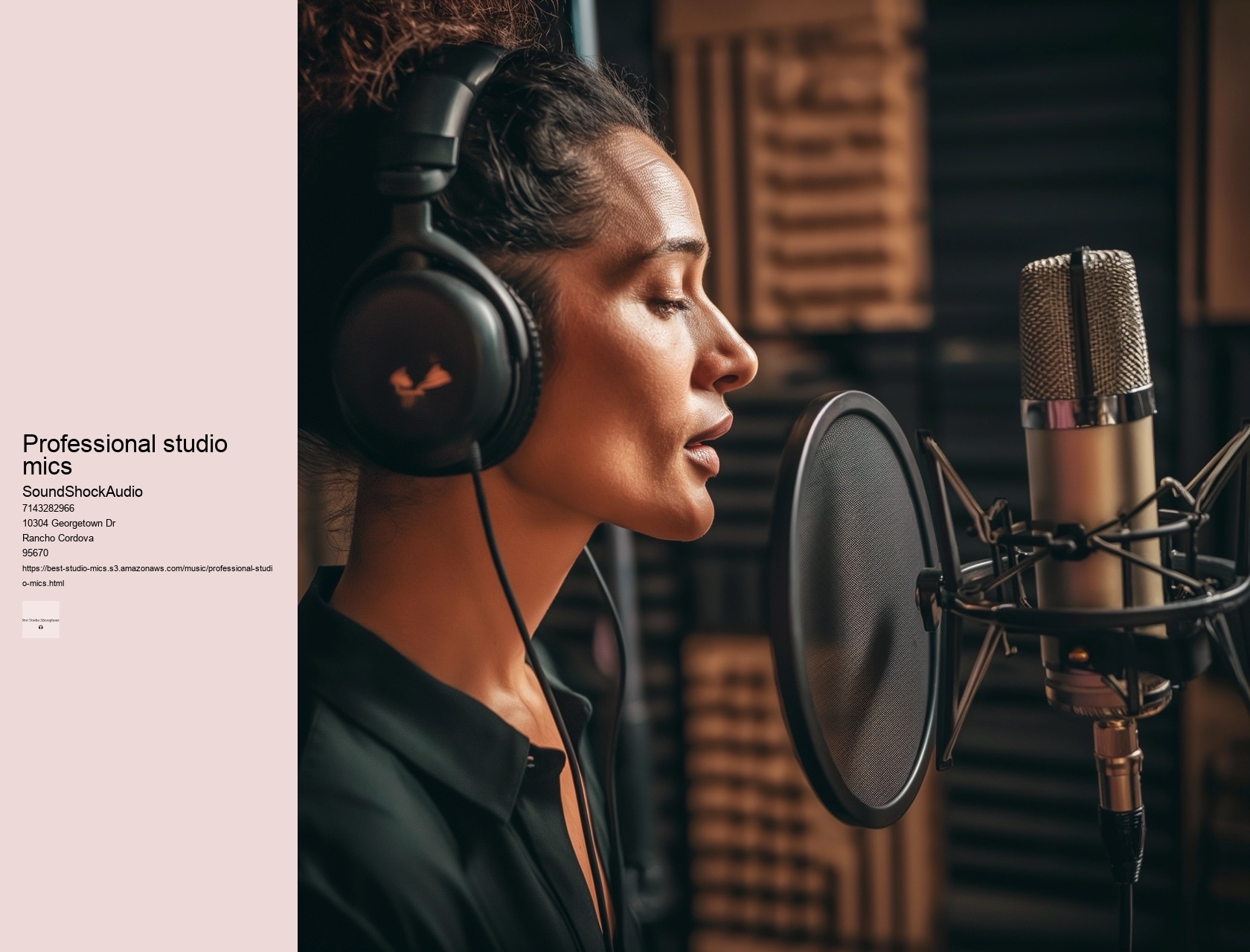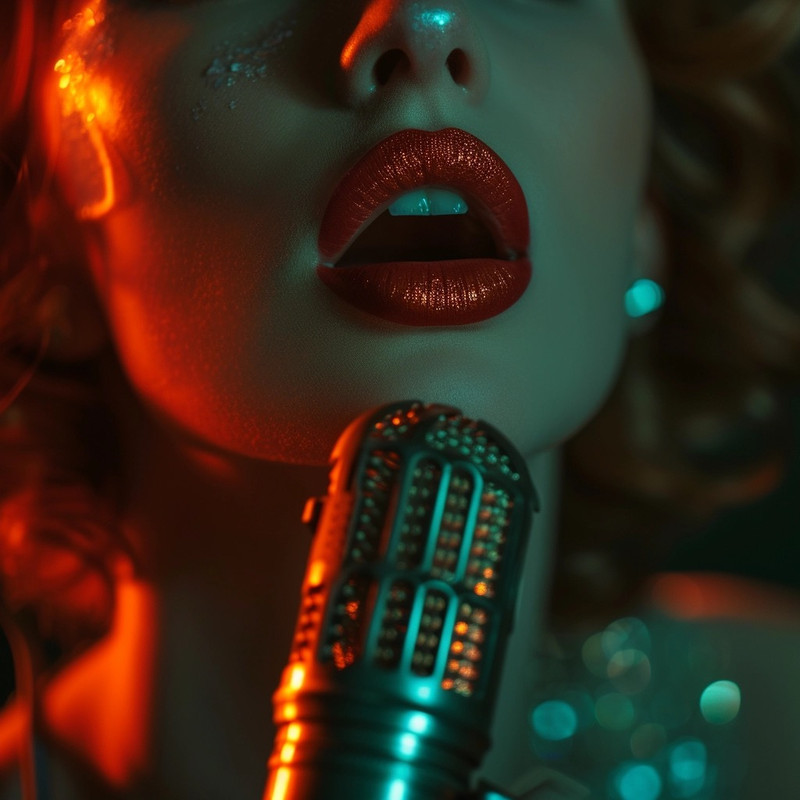

Imagine capturing every nuance of a vocalist's performance—the subtle breaths, the softest whispers—with such fidelity that listeners feel enveloped in the experience. To find out which microphone to buy, check out the best studio microphones on SoundShockAudio.. They are a must for any professional studio. They are perfect for situations where you want to record two sources simultaneously or take advantage of the microphone's null points to reject side noises intentionally.
Preamplifiers act like acoustic amplifiers, taking those faint breaths and transforming them into powerful sonic waves capable of filling any space or recording medium without losing fidelity or introducing unwanted noise. This guide aims to provide readers with essential insights into selecting premier microphones that ensure flawless recordings.
Aston Origin is a fixed pattern (cardioid) condenser and the smaller of Aston's two mics. As we will explain, not all microphones are the same.
AKG, like Sennheiser, has managed to release a classic as well as a modern reimagining of the most popular dynamic drum microphone of all time. For rich vocals or narration, snuggling up close with a cardioid pattern mic can bring warmth and presence.
Firstly, within the intimate confines of a home studio, microphones should possess versatility and forgiveness in character. Moreover, consider diaphragm size: large-diaphragm condensers typically offer warmer tones perfect for voiceovers or singing; small-diaphragm ones provide more accurate representations of acoustic instruments' timbres. Prioritize durability alongside audio quality.5.
But distance matters too; too close and you risk overwhelming bass due to the proximity effect, too far and the voice loses its intimate warmth. Selecting the best studio microphone for professional-grade recordings hinges on understanding this delicate interplay between sensitivity and fidelity.
This mic comes with Blue VO!
It is this device that deftly transforms analog brilliance into digital excellence, ensuring every subtle detail and dynamic expression is captured for posterity. The KSM137 is a great mic for everything from woodwinds or brass to guitars classics and choir singers. The quality of an audio interface can greatly influence the fidelity of recordings; a superior model will adeptly handle signal conversion with minimal noise and distortion, maintaining the integrity of the original sound.
These frequencies can distort your perception of recorded sounds when left unmanaged. Connectivity too poses considerations; XLR connections remain industry staples due to their robustness and balanced signal transmission capabilities.
Finally, consider how the right microphone enhances not just individual projects but your reputation as well. This isolation allows for cleaner recordings even when adjustments are made during a session.
In the realm of studio microphones, this equilibrium often dictates the quality of audio captured, directly influencing the end product's caliber. It anchors your mic in place, preventing unwanted vibrations or movements that could tarnish your perfect take.


Choosing an entry-level microphone doesn't mean compromising on versatility either. At its core, a preamplifier's mission seems straightforward: boost microscopic whispers captured by microphones into robust torrents that recording equipment can handle with grace. This versatility makes it suitable for everything from intimate vocal sessions to room-filling orchestral recordings; however, its sensitivity might not be ideal in exceedingly loud environments.
You'll need a lot of gain for the SM7B to produce that legendary sound. Thirdly, use rugs or carpets along with heavy curtains on windows not only to prevent external noises from entering the room but also to dampen internal reflections of sound off hard surfaces like floors and glass panes.
Condenser mics are preferred by most studio professionals for recording vocals. Studio You'll also need a microphone that can record the performance.
Shure SM57's ability to withstand high volumes without breaking a perspiration earns it a spot on this list. Lastly, headphones serve as both scout and guardian in this realm—a means to intimately monitor and critique sounds as they come to life while keeping external noise at bay.
Joe Rogan and other podcast professionals use this microphone to record smooth, clear audio. The risk? Another contender, the AKG C414 XLII, offers multiple pickup patterns and a slightly elevated high-frequency response ideal for acoustic instruments' detail retrieval.
It not only provides a better distance indicator when you are up close but it also makes it less likely that it will knock out your teeth in a noisy club gig. The juxtaposition of 'vintage' and 'modern' may seem paradoxical, yet today's ribbon mics harmoniously blend historic sonic characteristics with contemporary durability enhancements.
Dynamic microphones offer robustness and reliability but may not possess the same level of detail as condensers. For those yearning for that smooth retro vibe reminiscent of yesteryear recordings—think brass ensembles or velvety vocals—a well-crafted ribbon mic might just be unparalleled.
Slate Digital has taken this idea and created a system that removes as many variables as possible. This is the most common polar pattern for recording vocals.

This allows you to connect it to your audio interface. Popular uses include vocals and guitar/bass cabinets, as well as any other situation that requires detail and noise reduction in an economical package.1. For instruments like acoustic guitars, experimenting with mic placement around the 12th fret reveals a balanced blend of string articulation and body resonance.
When it comes to handling noise—the unwanted thumps and rumbles transmitted through a microphone stand or boom arm—microphone design is paramount. These mics are all about feeling and finding what suits your voice.
The variables of room acoustics, microphone characteristics, and personal artistic flavor mean that sometimes breaking these “best practices” might yield uniquely brilliant results. Smooth response lends itself well to complex sounds like guitar amps, strings, and percussion.
Strategic thinking is also important. It also has a slightly better bass response and more clarity than a typical dynamic microphone.
Shure has created an online guide on the best microphones to use for home recordings. To reach professional heights in recording quality, one must consider this trinity of audio components. Since the 1960s, this legend has been delivering the same warm and organic sound.
We've selected microphones that fit a range of budgets and abilities. Picture two performers facing each other over such a mic—a duet ensues where each note is caught in this bidirectional dance but stray echoes from beyond this intimate axis falter and fade away.
Another key feature is the frequency response range that a microphone offers. Just as an exquisite instrument brings out the best in a musician's skillset; so too does an exceptional microphone capture every detail of sonic brilliance waiting to be unleashed upon eager ears worldwide.- Encouragement to experiment with techniques and gear to find the perfect sound setupWhen venturing into the intricate world of audio recording, one might be inclined to believe that a singular, static setup is the key to achieving studio-quality sound.
They integrate effortlessly with computers, negating the need for external audio interfaces or complicated setups. They are sensitive to sounds directed towards the microphone and more effective at reducing unwanted background noises coming from the side or behind than cardioid and supercardioid.
Adam Levine has been seen using various microphones over the years, but he is often associated with the Shure Beta 58A for live performances. This microphone is known for its durability, sound quality, and ability to handle the dynamic vocal range that Levine exhibits during his performances.
Old microphones often sound better to some people because they have a unique warmth and character that modern microphones might lack. This is due to the analog technology and materials used in their construction, such as vacuum tubes and ribbon elements, which can add a pleasing harmonic distortion and richness to the sound. Additionally, the imperfections and limitations of older technology can sometimes produce a more desirable and nostalgic audio quality.
Joe Rogan uses the Shure SM7B Vocal Dynamic Microphone for his podcast, "The Joe Rogan Experience." This microphone is popular among podcasters and broadcasters for its ability to capture clear, smooth, and natural sound while minimizing background noise.